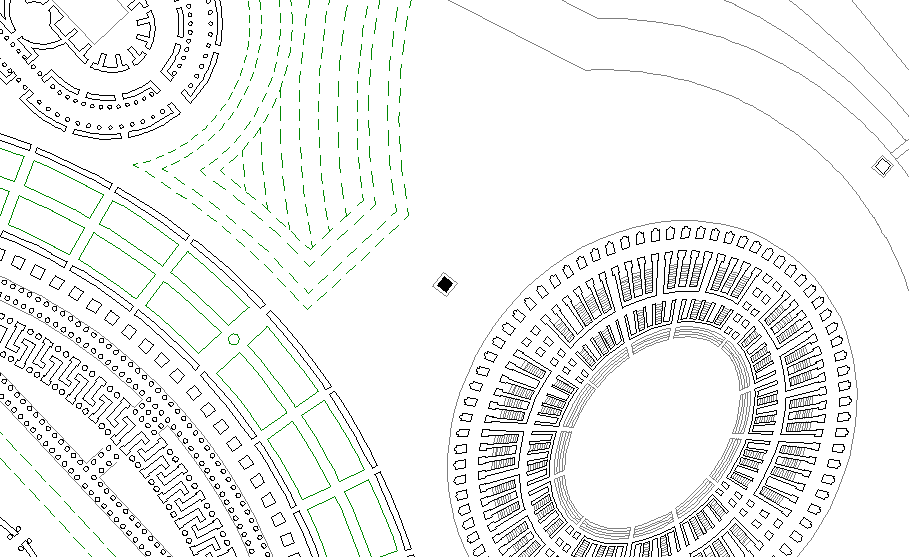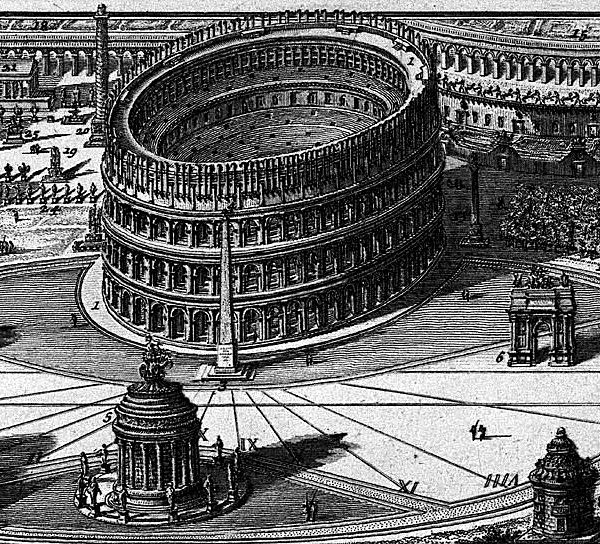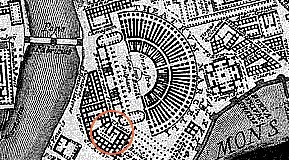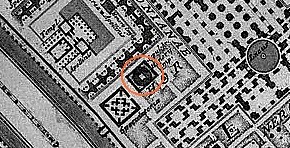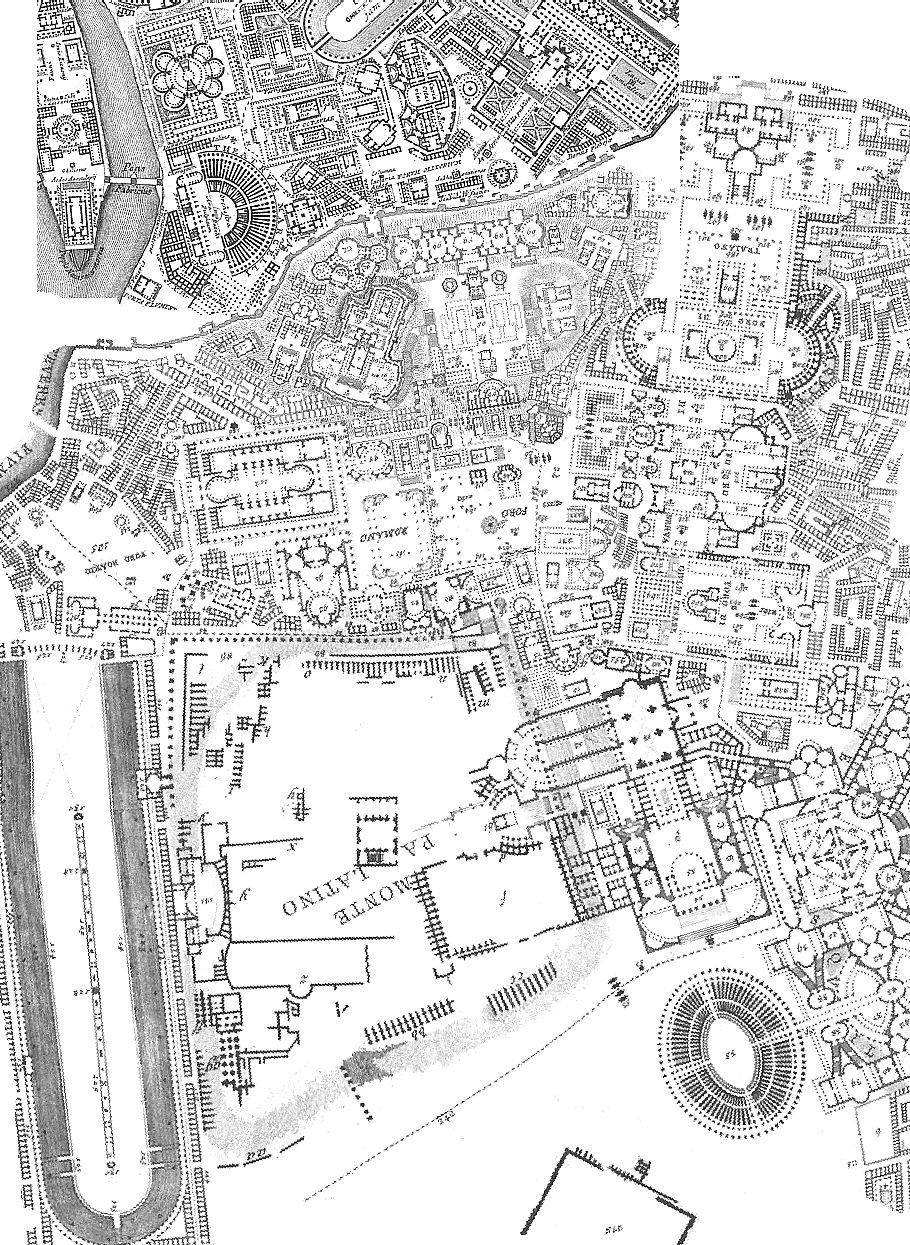Encyclopedia Ichnographica | Columna apotheoseos Antonini Pii | 1/1 |
|
...columna Antonini Pii, was erected in memory of Antoninus Pius, by his two adopted sons, Marcus Aurelius and Lucius Verus. It stood a little west of the present House of Parliament, on the edge of the slight elevation known as monte Citorio. It had the same orientation as the Ustrinum, from which it was separated by a distance of 25 meters. The column was a monolith: of red granite, 14.75 meters high, and stood on a pedestal of white marble. As represented on a coin of Antoninus, it was surrounded by a grating. Previous to the eighteenth century the base of the column was entirely buried, but the lower part of the shaft itself projected about 6 meters above the ground. In 1703 the base was excavated, but the shaft lay in the piazza Colonna for many years, until it was used to repair the obelisk in the same piazza. Three of the sides of the pedestal, which is now in the Vatican gardens, are covered with reliefs. The principal one, representing the apotheosis of Antoninus and Faustina, was turned toward the Ustrintim. The other two represent soldiers on the march. The fourth side bears the dedicator inscription. (Platner) |
Vincenzo Fasolo, "The Campo Marzio of G. B. Piranesi". |
|
24 December
Similarly, the T[emplum] Pietatis and the Theatrum Marcelli are delineated together within the Ichnographia, yet the temple of Pietas was destroyed by Augustus in order to make room for the theater of Marcellus.
Of more interest, however, is that Piranesi also omitted buildings that should have been delineated within the Ichnographia. While the Sepulchrum Honorij Imp., the mausoleum built by the emperor Honorius circa 400, is within the Ichnographia, the building that the mausoleum was in actuality attached to, the basilica of St. Peter built by the emperor Constantine circa 330, is not delineated within the Ichnographia.
|
|
Within the first volume of Le Antichitŕ Romane are a series of plans of ancient Rome: baths of Titus, topographical map, barracks of Tiberius, baths of Caracalla, nymphaeum of Nero, baths of Diocletian, Forum Romanum, Capitoline Hill. When combined with the Ichnographia Campus Martius these plans constitute an almost complete plan of ancient Rome. |
Quondam © 2019.11.10 |
